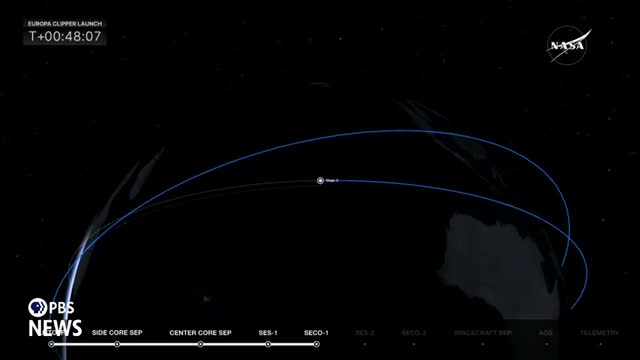NASA's Europa Clipper poised for historic space separation
This article was created by AI summarizing key points discussed. AI makes mistakes, so for full details and context, please refer to the video of the full meeting. Please report any errors so we can fix them. Report an error »

In a recent government meeting focused on the launch of NASA's Europa Clipper spacecraft, officials provided updates on the mission's progress and the technology involved in its operation. The meeting highlighted the successful completion of the second burn of the Falcon Heavy rocket, which is crucial for placing the spacecraft into its intended orbit.
During the burn, data was transmitted through the Tracking and Data Relay Satellite (TDRS) network, a legacy satellite system that covers approximately 90% of the burn duration. However, due to the limited bandwidth of the TDRS—about 20 kilobits per second, significantly lower than typical home internet speeds—video data could not be processed. Instead, priority was given to vehicle telemetry, ensuring that mission control could monitor the rocket's velocity and altitude.
As the burn concluded, officials reported a nominal orbital insertion for the Europa Clipper, marking a significant milestone in the mission. The spacecraft is designed to explore Jupiter's moon Europa, assessing its potential habitability rather than directly searching for signs of life. The next critical event will be the spacecraft's separation from the rocket's second stage.
The meeting also featured insights from the Deep Space Network team, which plays a vital role in maintaining communication with spacecraft beyond the moon. The network consists of 14 large antennas located globally, ensuring that missions can communicate with Earth regardless of their position in space. As the Europa Clipper prepares for its journey, the team is set to establish communication shortly after the spacecraft's separation.
Overall, the meeting underscored the collaborative efforts behind the mission and the advanced technology that enables deep space exploration. The Europa Clipper is poised to provide valuable data about one of the solar system's most intriguing moons, with the potential for future missions to land and collect samples if conditions are deemed suitable for life.
During the burn, data was transmitted through the Tracking and Data Relay Satellite (TDRS) network, a legacy satellite system that covers approximately 90% of the burn duration. However, due to the limited bandwidth of the TDRS—about 20 kilobits per second, significantly lower than typical home internet speeds—video data could not be processed. Instead, priority was given to vehicle telemetry, ensuring that mission control could monitor the rocket's velocity and altitude.
As the burn concluded, officials reported a nominal orbital insertion for the Europa Clipper, marking a significant milestone in the mission. The spacecraft is designed to explore Jupiter's moon Europa, assessing its potential habitability rather than directly searching for signs of life. The next critical event will be the spacecraft's separation from the rocket's second stage.
The meeting also featured insights from the Deep Space Network team, which plays a vital role in maintaining communication with spacecraft beyond the moon. The network consists of 14 large antennas located globally, ensuring that missions can communicate with Earth regardless of their position in space. As the Europa Clipper prepares for its journey, the team is set to establish communication shortly after the spacecraft's separation.
Overall, the meeting underscored the collaborative efforts behind the mission and the advanced technology that enables deep space exploration. The Europa Clipper is poised to provide valuable data about one of the solar system's most intriguing moons, with the potential for future missions to land and collect samples if conditions are deemed suitable for life.
View full meeting
This article is based on a recent meeting—watch the full video and explore the complete transcript for deeper insights into the discussion.
View full meeting